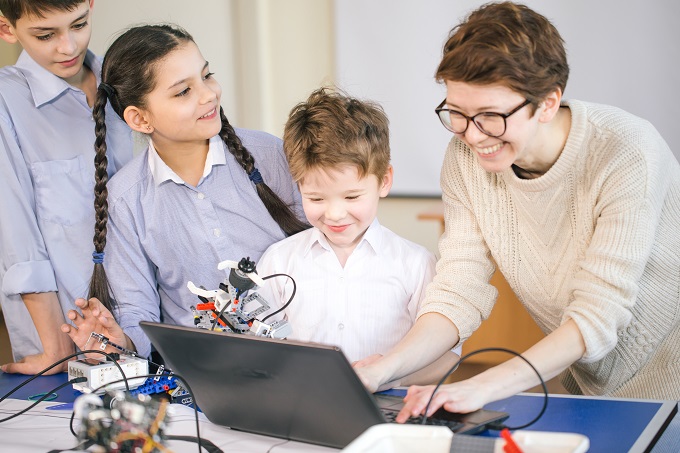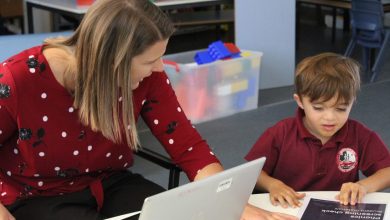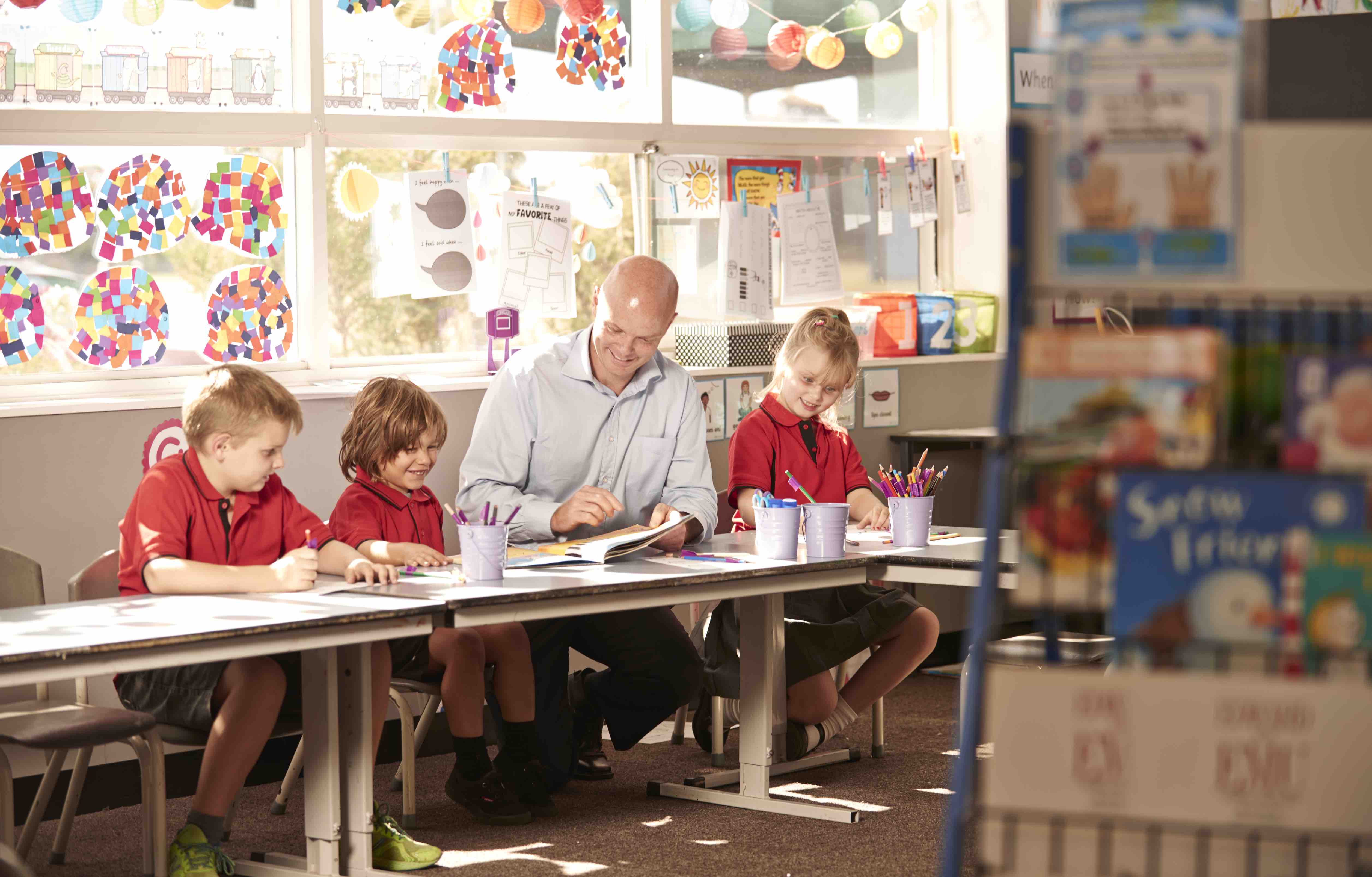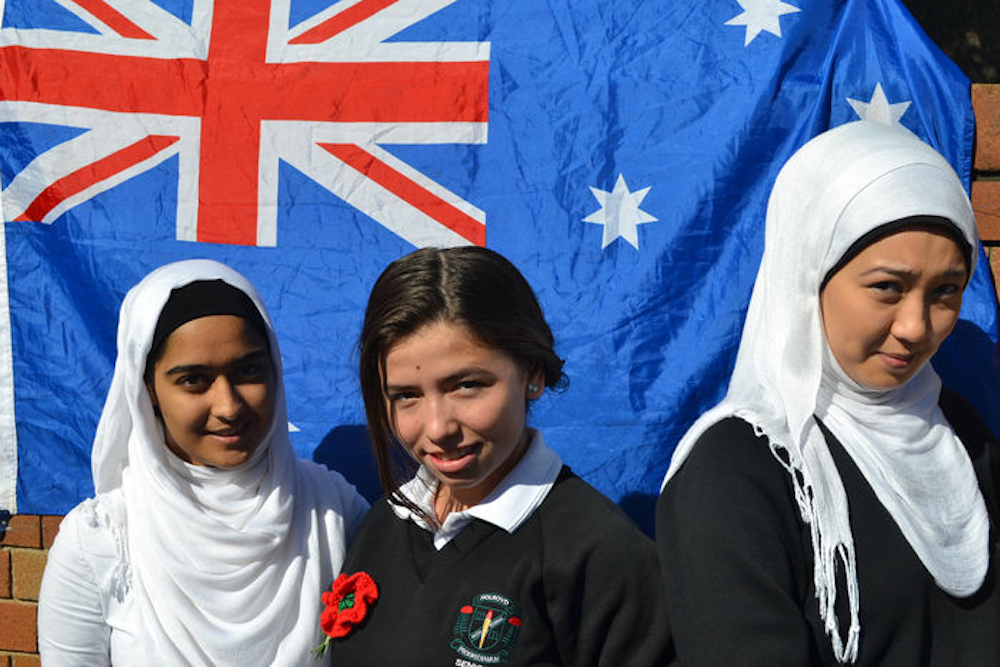
After three years of quarrelling, the Turnbull government has failed to pass the proposed amendment to section 18C of the Racial Discrimination Act. Had the law passed, it would have become lawful to “offend and insult” others on the basis of race, but not to “vilify”.
How does this debate serve as a backdrop to the education of young people in our schools? How do you engender an environment where school policy prohibits race-based bullying when the ‘grown-ups’ in wider society are debating their right to racially insult?

A year ago, we heard from Dorothy Hoddinott AO FACE. As the principal of Holroyd High, Ms Hoddinott leads a school with substantial Muslim enrolment, where 88 percent of students are from a non-English speaking background.
I wanted to explore how racism interacts with Australian schools, and considering the current anti-Muslim sentiment, I asked: “How do you help a Muslim child rationalise the naked Islamophobia circulating in the press and on social media?”
Ms Hoddinott said that first and foremost, “schools must be defenders of our children’s rights – Muslim children have the same rights and responsibilities as everyone else”.
“You have to show children that school is a safe place for all children, and they have to feel safe and confident. A big part of that is fairness; you have to create an environment where children know they will consistently be treated fairly.”
She says the way a school arranges its behaviour code will affect the culture of the school, and a child-centred approach – “one that is focussed on the development and growth of the children” – can create an atmosphere where students feel their wellbeing matters. The result? “The child understands that the school is there to help and support them and not inhibit them.”
“You must be strenuously anti-racist,” she stated. “The school must consider racial slights very seriously, and address them in the context of bullying.” While all racist or prejudice-driven harassment is unacceptable, Ms Hoddinott sees the racial harassment of children as particularly problematic and “jumps on it immediately”.
“This is something over which children, who are powerless anyway as children, have no control. They have no control over the colour of their skin. A child also has no control over the family religion; they don’t develop that agency until they are much older.”
Rather than simply following the department-issued positive behaviour framework, Ms Hoddinott says they “talk kids through” conflict: “We use a process of restorative justice that we embarked on with Marist Youth years ago.”
“We found we had a great deal in common with Marist Youth in the way we dealt with difficult children.” Marist Youth emphasises that education in schools is largely about relationships, which can develop conflict and require resolution, forgiveness and healing. Ms Hoddinott explained that restorative justice “removes the judgement of the child. It encourages them to take responsibility for their act, and then attempt to ‘mend’ the situation”.
Critical thinking in a ‘post-truth’ world
While all groups can experience racism and prejudice, Ms Hoddinott said “it is alarming to people in the Muslim community that they are constantly denigrated in the media”. Her experience is that while mainstream media reporting has been relatively restrained, social media, which is “uncontrolled and not subject to any law”, has been a source of distress for many Muslim students and their families.
Physical harassment is also a reality for Muslim Australians: Ms Hoddinott told of female students wearing hijab being harassed on the way home from school, including one incident where a man attacked a girl with his umbrella, trying to enforce removal of her hijab, and somewhat ironically, shouting that she was being repressed by men.
With this sentiment in the school’s surrounds, I was curious how Ms Hoddinott dealt with prejudices coming from home. She acknowledged that attitudes coming from home “are entrenched” and can therefore present considerable challenge to the anti-racist school environment. She said, “if your school culture is openly anti-racist, and the school has strong policies and takes action to put them into practice, then parents can make their choice. If they believe the school is not functioning to their wishes, they can take their children elsewhere”.
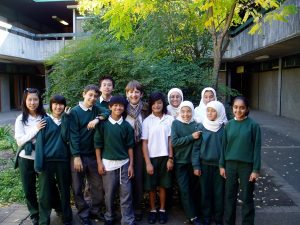
Ms Hoddinott’s approach is “to answer unreason with reason”. “As students reach high school, their capacity to reason improves, and reason and prejudice don’t sit easily together,” she noted.
This is where the teaching of critical thinking is paramount. Ms Hoddinott says the media might be restrained, but they are out of balance, and Muslim families feel targeted by reports about sexism or oppression of women through hijab, when sexism in other groups goes largely unreported.
In the face of this narrative constantly circulating on social media, she said: “School must be a place where you can talk through all that with children, and teaching critical thinking is an important part of that, so students can differentiate between what is real and not real.”
Ms Hoddinott says the key is to teach children not just to accept everything they read regardless of the source: “With so many young people getting their news from social media, they must acquire the skills to determine what’s valid and what’s not, what’s commentary or opinion, or what’s actually ‘news’”.
Ms Hoddinott added that, although “bias recognition” is underemphasised in the curriculum, “sensible teachers will teach those skills to students, because not all parents can articulate in a way that encourages critical thinking”.
In the traditions of Socratic dialogue, students can learn to critically analyse both the content, its origins, and how the input interacts with their own underlying beliefs; instead of “a simply emotional response to things,” she advised.
Resilience built on trust and hope
As schools cannot extinguish all bigotry, Ms Hoddinott says resilience must be encouraged at school – she added that “George Brandis did us no favours in 2014 saying people had ‘a right to be bigots’”. A supportive school environment, she said, “creates a strong basis so you can then deal with the outside world”.
And with this statement, Ms Dorothy Hoddinott crystallises the clamour of voices advocating for all minority groups. Education must suit the students, and this is felt keenly by our Indigenous students, many of whom struggle in the face of a curriculum and style of learning that may not align with their competing cultural priorities.
Ms Hoddinott says cultural training has been instrumental in the inclusivity of their school culture, where any given class has a high population of students with English as an additional language. Teachers are trained to clarify vocabulary or concepts to allow the students to access content that may be assumed knowledge in a mainstream white Australian cultural context.
Not all additional language learners are newcomers. For many Indigenous people, English is the sixth or seventh language. According to the Menzies School of Health Research report, ‘Cultural Responsiveness and School Education’, teachers are not required to undergo Indigenous cultural training to work with Indigenous students, often resulting in poor cultural competence, and “a mismatch” between the middle class European dominated teaching force and the home lives of Aboriginal and Torres Strait Islander students.
Indigenous Education discussion invariably revolves around “closing the gap”, which, (in their article, ‘Racism hits Indigenous students’ attendance and grades’, published on The Conversation), researchers, Dr Nicholas Biddle and Dr Naomi Priest of the Australian National University, described as the target of eliminating disparities in life expectancy between Indigenous and non-Indigenous Australians “within a generation.”
They said that while numerous programs and initiatives are “clearly well intentioned” with many “based on solid evidence and evaluations”, they have been “far from successful in achieving our goals for Indigenous education”. Why is this so? They wrote: “This may be in part because Indigenous education policy, at least at the national level, is mostly silent on the difficult issue of racism and discrimination.”
The researchers used data from the Longitudinal Study of Indigenous Children, also known as Footprints in Time, and revealed that Indigenous children who have experienced racism before the age of ten have “substantially worse maths scores and perceptions of their own academic ability than those who haven’t”.
Ms Hoddinott said, “alienation of cultural groups is usually aligned with failure at school”. Her view is that social cohesion is created by the provision of certain things to all people, regardless of race, religion, gender, or any other factor. These are “trust, hope for the future, and pathways to achieving that future”.
“Trust is established for students when schools demonstrate that you can put your trust in the school, and you can be successful, that there are pathways to the future for you, that you will not be rejected by society. Then, social cohesion is much more likely,” Ms Hoddinott asserted.
“Schools can reject children, and those children can then become cut off from mainstream society.”
“Children do need to be able to deal with failure; they don’t need to be propped up so far as to get a false view of what they can do, but I think we should be thinking in terms of success for all children at school,” she added.
How do you respond to racism at a grass-roots level in an era of political upheaval, and of increasing mistrust of minorities? Perhaps to be “strenuously anti-racist” is the key. Enrolments haven’t waned at Holroyd High. Their strong academic results, and community perception that it offers a safe and happy place to learn continue to draw enthusiastic enrolments from all cultural groups.
School leaders looking to create a culture of tolerance might consider staunch devotion to equality and inclusivity in policy, and an unswerving dedication to acting on these policies. It seems to be working out just fine for Holroyd High.

